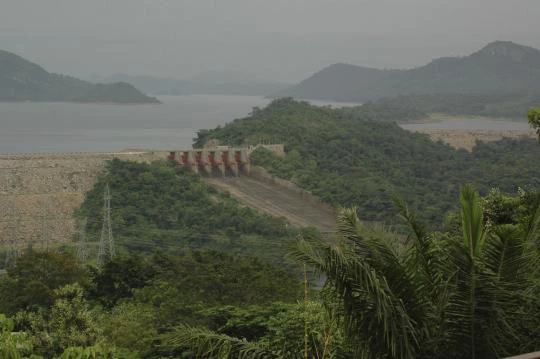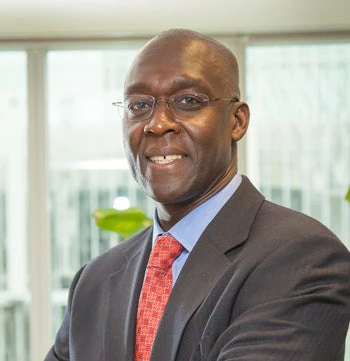As African Presidents, Prime Ministers, and business leaders arrive in Washington to attend the first US-Africa Summit, one topic that will be paramount in their discussions with President Obama and his Cabinet is: how governments and families can access affordable electricity across the African continent.
Consider the facts: one in three Africans, that’s 600 million people, has no access to electricity. Neither do some 10 million small and medium-sized enterprises. Those homes and businesses fortunate enough to have power pay three times as much as those in the United States and Europe; furthermore, they routinely endure power outages that cost their countries from one to four percent in lost GDP every year.
 Despite the fact that Africa is blessed with some of the world’s largest hydropower and geothermal resources (10-15 GW of geothermal potential in the Rift Valley alone), bountiful solar and wind resources, as well as significant natural gas reserves, total power generation capacity in Africa is about 80,000 megawatts (MW) (including South Africa), roughly the same as that of Spain or South Korea.
Despite the fact that Africa is blessed with some of the world’s largest hydropower and geothermal resources (10-15 GW of geothermal potential in the Rift Valley alone), bountiful solar and wind resources, as well as significant natural gas reserves, total power generation capacity in Africa is about 80,000 megawatts (MW) (including South Africa), roughly the same as that of Spain or South Korea.
As Africa enters its 20 th consecutive year of economic expansion, with the World Bank forecasting that Africa’s GDP growth will remain steady at 4.7 percent in 2014, and strengthening to 5.1 percent in each of 2015 and 2016, the continent needs more electric power. Specifically, Africa needs to add 7,000 MW of generation capacity each year to meet the projected growth in demand, yet it has achieved only 1,000 MW of additional power generation annually.
Over the last week I visited Cameroon and the Democratic Republic of the Congo, two of Africa’s so-called ‘fountain states.’ The resources in these two countries – along with Guinea, Ethiopia, and Uganda – can generate enough hydroelectricity to satisfy the growing demand in Africa. I saw the range of applications for which this power is needed, and I saw clear solutions.
In Eastern Cameroon I visited the construction site for the Lom Pangar hydropower project. Once construction is complete and the reservoir is filled in the next couple of years, this new dam on the Sanaga River will improve the reliability of power supply and lower the cost for up to five million Cameroonians. The Lom Pangar project will also pave the way for developing the full 6,000 MW of hydropower potential of the Sanaga River by regulating the flow of the river.
In the Democratic Republic of Congo, last week, I visited the Inga hydropower site on the mighty Congo River. DRC’s overall hydropower potential is estimated at 100,000 MW, the third largest in the world behind China and Russia, yet only 2.5% of this key resource has been developed. With 40,000 MW of generation potential, Inga is the world’s largest hydropower site. Its proper development can make Inga the African continent’s most cost-effective, renewable source of energy with an estimated generation cost of US$ 0.03 per kilowatt hour with little or no carbon footprint--a significant added virtue.
As African leaders will undoubtedly tell their American hosts over the coming days of the US-Africa Summit, Africa has vast hydropower potential but it is using just 8 percent of this untapped water force. Compare that to Western Europe which uses 85 percent of its available hydropower potential. What a stunning contrast, 8 percent versus 85 percent!
Abundant hydropower in Western Europe gave many countries the economic boost they needed to steadily raise their living standards and power new chapters in their drive for economic development. Hydropower gave Europe a powerful head-start on building affluence and progress. Like Europe and the rest of the world, Africa deserves the same opportunity to exploit this green source of power to improve the lives and economic prospects of its people.
Beyond building these power generation assets, they must be connected to the market, which calls for regional cooperation to build the transmission network. We are working with African leaders and their development partners, as part of our broader initiative of Regional Integration, to create power pools in Africa’s East, West, Central, and Southern sub-regions. Those countries with abundant geothermal, gas, hydro, solar, and wind resources can feed their excess power supply into a common pool, while neighboring states with lesser endowments of energy resources and generation capacity can benefit from this integrated approach to delivering electricity to their people. It is incumbent upon the individual countries to remove all barriers to these cross-country investments. As noted by both the World Bank and Power Africa Initiative, the benefits of these investments in generation can only be harvested, and transferred to African consumers, if the distribution companies meet the minimum level of efficiency, financial viability, and good governance. The region’s electric utilities – whether they are state-owned or private enterprises – need to be operating at full capacity and undertaking the necessary reforms so as to bring the power to the people of Africa.
In East Africa, for example, the World Bank has mobilized $684 million to build the Eastern Electricity Highway Project (EEHP) to connect Ethiopia’s electrical grid with Kenya, and reduce energy costs and protect the environment while paving the way for more dynamic regional cooperation between the countries of East Africa.
Elsewhere in Africa, as world prices for photovoltaic equipment have fallen, solar power is an increasingly affordable option to add the continent’s energy mix. In Mauritania, which is in the forefront of the renewable energy movement in Africa, solar energy now powers 30 percent of Nouakchott’s energy use, with 50 percent of the capital city’s energy needs likely to be covered by solar in the next several years. There is also significant potential for large-scale concentrated solar power arrays, as have already been constructed in Morocco.
In addition to power from two regional hydropower plants at Manantali and Felou, Mauritania will commission a 30-MW wind farm in the next 24 months that will bring the total share of renewable energy, including hydropower, to about 45% of that country’s total energy demand. The remainder will be supplied by the Banda Gas to Power Project, recently approved by the World Bank’s Board of Executive Directors. Not only will the Banda project produce and convert natural gas from offshore gas fields in Mauritania into 300 MW of new electricity generation capacity, it will also export surplus power to Mali and Senegal, yielding regional benefits as well.
The Banda project is significant – not only for its contribution to the energy needs of The Sahel, but for its demonstration of the range of World Bank Group instruments that can be deployed to bring this high-return project to fruition. A combination of up to $261 million in partial risk guarantees and $585 million in investment guarantees has been mobilized to attract foreign and regional investors to this innovative regional power project.
Going forward, it will only be possible to attract these investors – international equity funds, insurance companies, pension funds (both African and global) – if power projects are bankable and well-structured. Institutions such as the World Bank Group can help to build that financial architecture through instruments such as Project Preparation Facilities, guarantees, and insurance.
Guarantees are essential because the perception of risk associated with energy investments in Africa remains distorted and excessive, and do not reflect the solid macroeconomic realities on the ground. Furthermore, large-scale infrastructure investments require long-term capital, yet they are typically subject to a mismatch of both currency and maturity. Countries are borrowing on the global bond markets, for five- or seven-year terms, when power projects take far longer to construct and generate revenue streams. Similarly, as sustained growth in Africa is also reflected in rising domestic savings, it is imperative to tap these resources and channel them into productive, high-yielding investments. By providing guarantees and political risk insurance, the World Bank Group can help to manage those risks and, in time, correct the risk profile of energy projects in Africa.
Expanding Africa’s access to electricity through grid, mini-grid, and off-grid solutions is a key element of our efforts to achieve the twin World Bank Group goals of ending extreme poverty and creating shared prosperity for all people of the continent. Furthermore, by meeting electricity demand with our plentiful renewable resources – hydro, geothermal, solar and wind – Africa can grow in an environmentally sustainable manner, with minimal additions to overall carbon emissions. Africa is poised to achieve green growth – a global public good -- while meeting the energy needs and growth aspirations of its people.
These are the messages that are likely to reverberate throughout the US-Africa Summit in Washington this coming week. I look forward to the discussions of how we can meet Africa’s electricity challenge. You can be sure that we in the World Bank Group, with President Jim Yong Kim in the lead, will mobilize new commitments to power up Africa’s present and future in close alliance with the US Government and Africa’s political and business leaders.


Join the Conversation